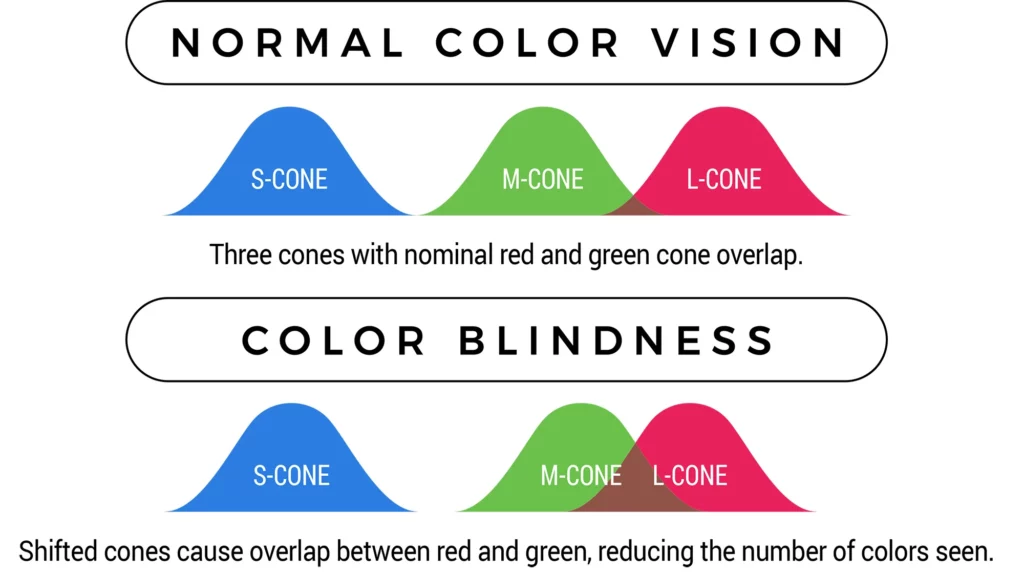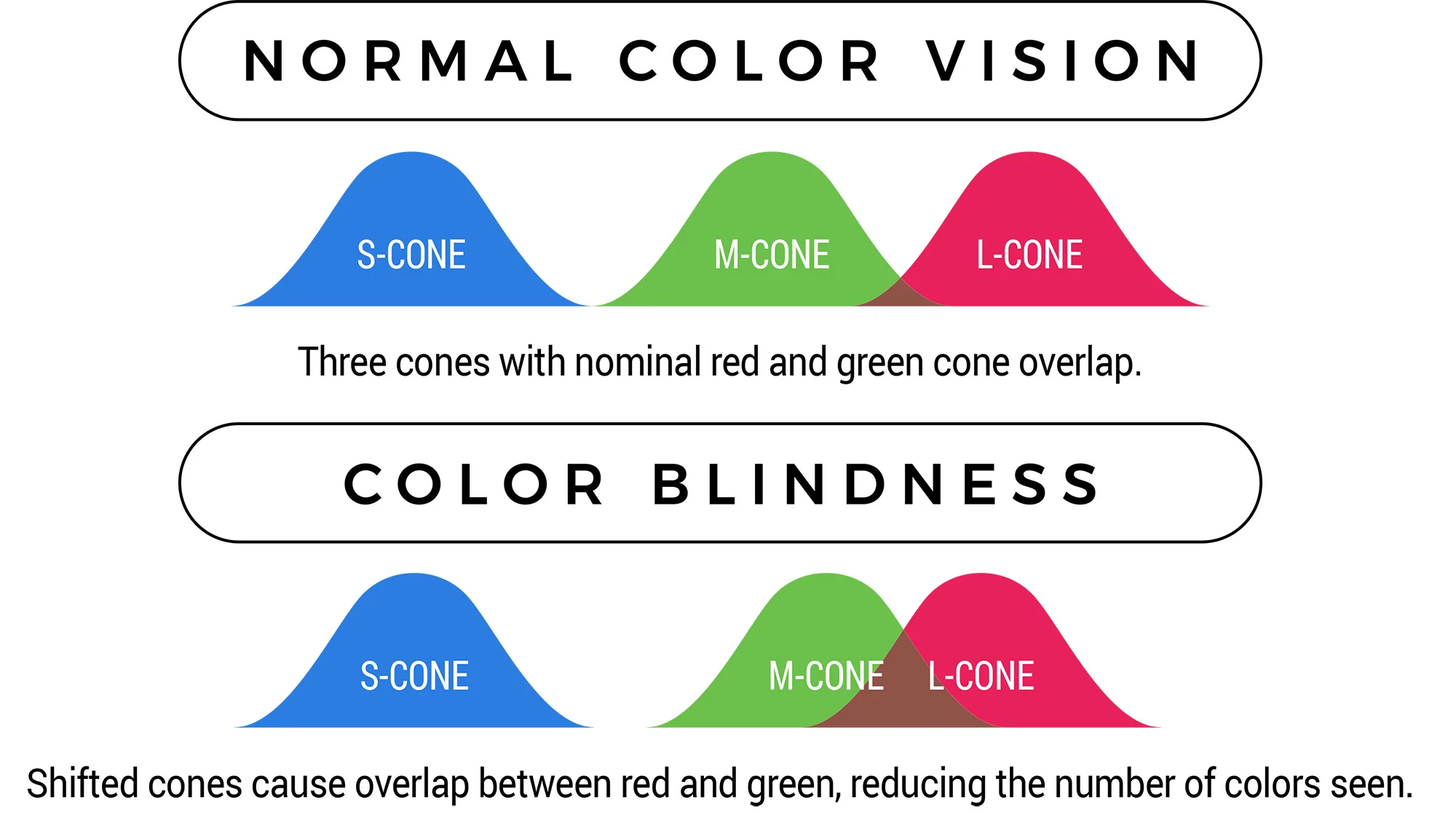By Casey Smith, Naturalist
One in 12 men and 1 in 200 women are colorblind. Of people with color-blindness, 98% are red-green colorblind. In our eyes, there are structures called rods and cones. These are specialized light receptors located in the retina in the back layer of the eye that help us see. Rods allow us to see in low light conditions. Cones allow us to see in bright light and convert light into color vision. In a person who is not colorblind, the cones slightly overlap, enabling us to see up to 1 million distinct shades of color. If a person is colorblind, there is a greater overlap resulting in confusion between colors like blue and purple, green and brown, yellow, orange, and red. Colorblind individuals see as few as 10% of colors compared to those who are not colorblind. Color-blindness affects nearly 350,000,000 people worldwide. Some ways colorblind individuals are impacted are less interest in art; difficulty cooking, driving, or getting dressed; restricted job opportunities; and struggles in the classroom.

I have to say, I’m not colorblind. I don’t have family who are colorblind. But I am captivated by videos that tug at your heart strings. Military personnel coming home to their dogs or kids, war veterans reuniting with friends after years apart, stray dogs being rescued. A couple years ago I saw one such video from Tennessee State Parks. The video is of colorblind people using special viewers to see fall color for the first time. It inspired me to get one of these viewers in our park district. And after budgeting, planning, and waiting, it’s finally here! The first colorblind viewer in the state of Ohio has been installed at Deer Haven Park. The Enchroma® lens powered viewer allows for those with red-green color-blindness to experience a broader spectrum of clear, vibrant, distinct color. As a park district, one of our goals is to provide “wow experiences” for park visitors. What could be more “wow” than seeing colors like red for the first time in your life? So spread the word, visit the viewer, and please let us know if you’ve used it and how it worked for you!







